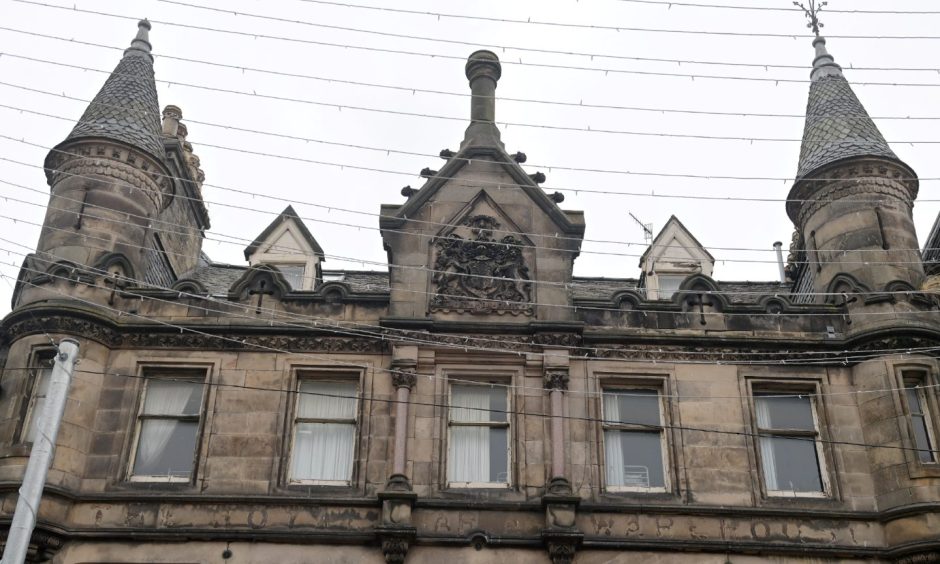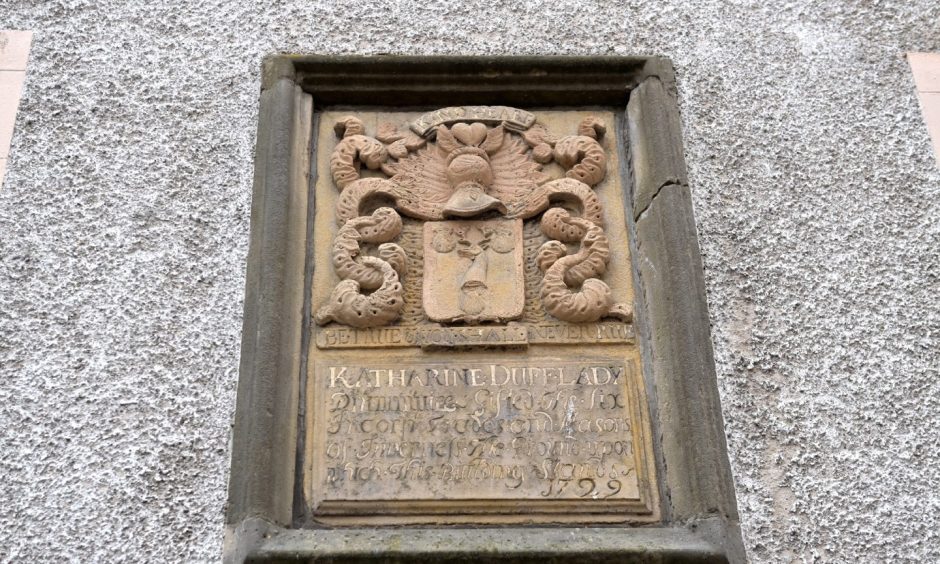There’s more to Inverness than meets the eye of the casual visitor and even many locals.
A lot of the city centre’s history is visible only if you lift your gaze above the line of shops and offices.
There you can find ornate carvings of cherubs and angels, animals and birds, elaborate coats of arms and the ghost signs of long-gone businesses.
Unseen parts of Inverness history
The Press and Journal took a walk around the centre with Pauline Mackay and Norman Newton who wrote the Wild About Inverness books and trails.
“These are things that people walk past every day”, says Pauline. “Things that locals are familiar with, yet they are unfamiliar.
“We would like to raise more awareness of this part of our history.”
We start at the 19th century former Caledonian Bank on High Street, now the Caledonian pub.
Above its Corinthian columns is a triangular space called a tympanum carved with the symbol of Caledonia holding bound-together reeds.
This represents the idea that individually we may not be strong, but we can do something if we come together with others.
Is that a fish and a sheep on that building?
On the left is a figure representing the River Ness, with fish and men in a boat.
To the right a figure with a cornucopia, representing produce of the land, as well as a shepherd boy and a sheep.
Below are two ornate urns with an image of Queen Victoria on one and Prince Albert on the other.
Along High Street, the building now occupied by Lush was once MacDougall’s Royal Tartan Warehouse.
The letters of the original business can just be made out above the first floor windows.
Norman points out the owner was one of the first to recognise tourism would revolutionise commerce in the Highlands.
A royal customer boosts business
He began stocking tartan goods and items for high-spending hunting, shooting and fishing visitors.
In 1851 Queen Victoria placed a large order for Balmoral, leading to a boost to trade and the royal coat of arms on the building.
Most of the wording for the old Royal Hotel built in 1864 is still visible in Union Street.
The building , now a bank, also features nine carved lion heads in three sets.
Another big cat can be seen in a heraldic crest above the door of the TSB on Inglis Street.
Big cats and mythical beasts
The Aberdeen Town and County Bank, which opened in 1877, includes a leopard, the symbol of Aberdeen, and a stag, representing the Aberdeenshire countryside.
More animals, mythical beasts and angels and cherubs can be seen in a series of easily-missed carvings on the building stretching around Academy Street, above Primo menswear shop, to Queensgate.
The heads of a bull and two rams can also be seen above the entrance to the Victorian Market.
The former Dunbar’s Hospital in Church Street, now a café, dates from 1668 and is a well known attraction.
But its history above eye level is not so visible.
Biblical quotations
Above each window are carvings of foliage and fabulous beasts with biblical quotations.
The 1982 Inverness Local History and Archaeology Guidebook No 4 by Edward Meldrum, a past-president of Inverness Field Club, explains the text.
They read: “This poor man cryed. And the Lord heard him and saved him out of his tryel.
“A little that a righteous man hath is beter nor the richis of manye vikid men. Hie that giveth to the poor leneth to the Lord and hie will paye them seavens times more.’
Another largely ignored inscription is on a plaque in nearby Bow Court.
Dating from 1729, it states land was granted by Katherine Duff, Lady Drummuir, for a building for the six incorporated trades and masons of Inverness.
Meldrum notes that the long-demolished Lady Drummuir’s House in Church Street was where Prince Charles Edward Stuart stayed before the Battle of Culloden and the Duke of Cumberland visited after the conflict.
An area once used for duelling
The building in Falcon Square, now housing a Highland Hospice shop and a Pizza Express, was reconstructed from the old Falcon Foundry.
It was removed from an area known as Dempster’s Parks, where arguments were once settled by duelling, and where the railway was later developed.
Some of its original sign writing is still legible.
Also going largely unseen are pieces of history inside the railway station.
Between platforms 4 and 5 are two metal plaques dating from 1858 commemorating the connection of Inverness to the British railway network.
Nearby is the old brass station bell which was rung by the station policeman before a train departed.
‘Hidden Inverness history worth seeking out’
These hidden parts of Inverness are worth seeking out, says Pauline.
“It’s there if you look for it.
“Going around looking at these incredible buildings, the carvings and statues, is also a family friendly thing to do.
“There may not be plaques on all the building giving you information, but you can go away and find out about these places yourself.
“It’s so educational, but also fun.”
Norman says older Invernessians will remember shops which have changed their names or are no longer there.
“But there are ghostly remnants of some shops and buildings where lettering on stone has faded over the years after being covered over or left to the elements.
“Occasional traces of this can be found from a hundred or two hundred years ago and it’s an important part of Inverness history.”
For more Inverness news and updates visit our dedicated page and join our Facebook group








Conversation